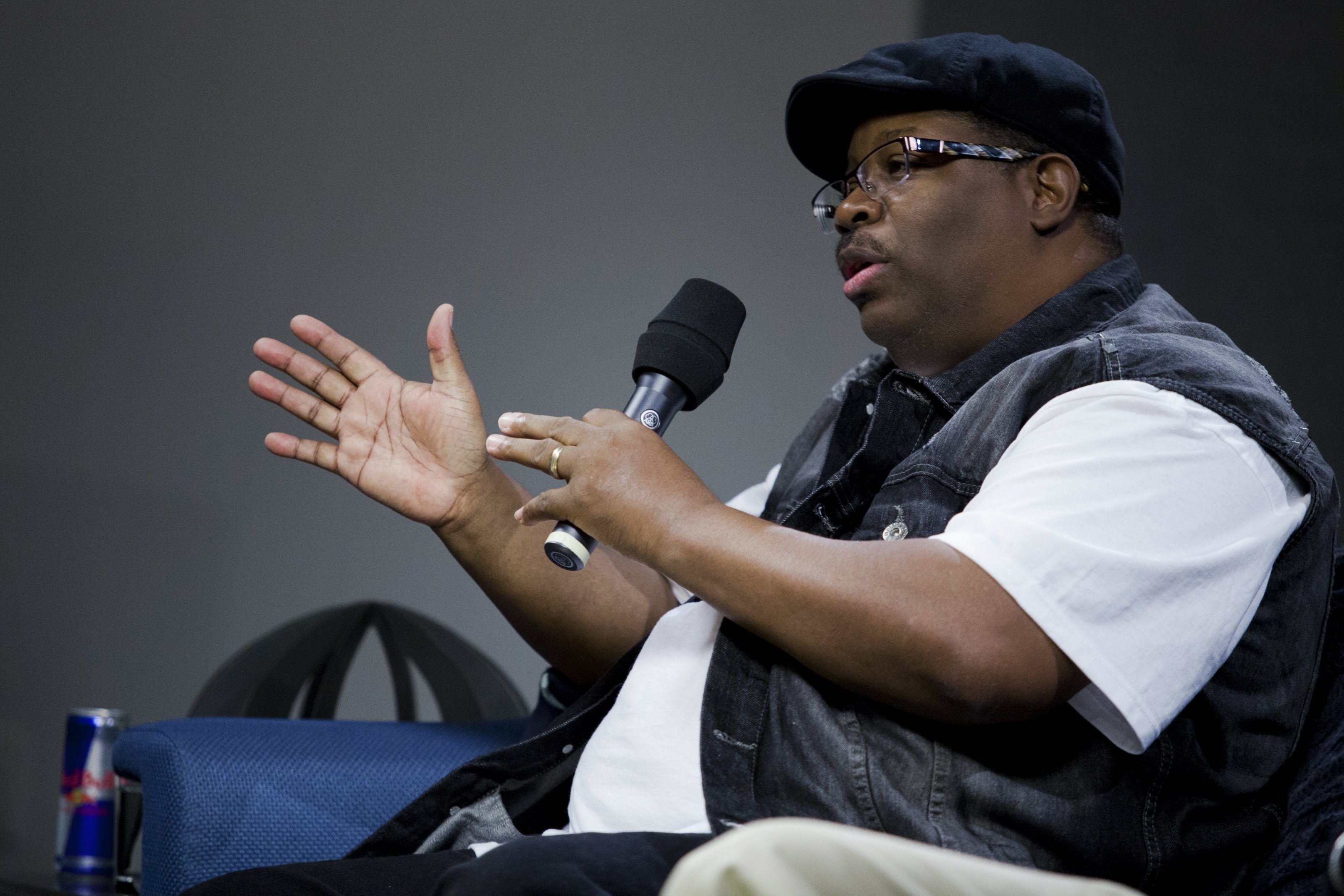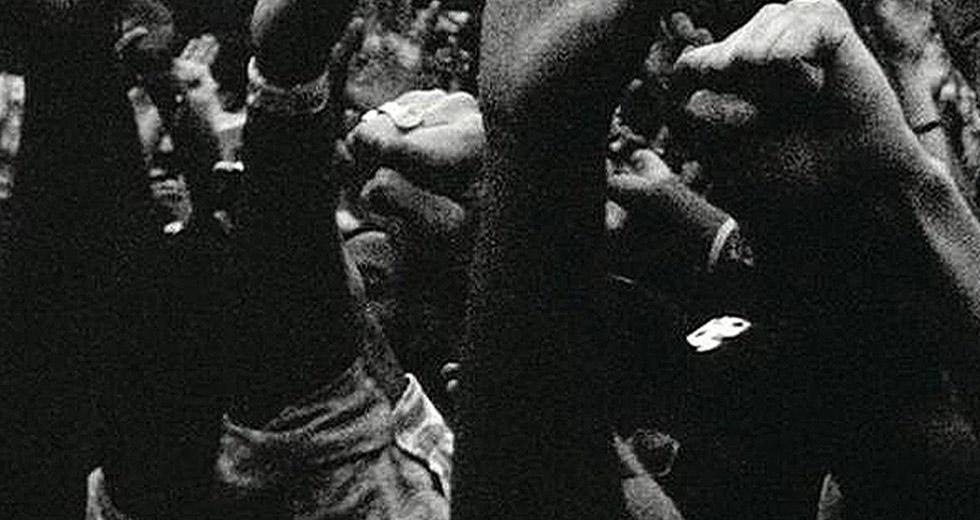Singing in Harmony: The Badgett Sisters
Noah Angell heads to North Carolina to track down a member of the gospel trio
December 30th, 2015. It was nearly noon and still no sign of the sun. We were on our way to Yanceyville from Durham, about an hour’s drive. The rain was dense beyond belief, pelting down on the windshield as I watched puddles and tributaries form in the fields we drove past. My mother was driving and was unusually calm given the tumultuous weather.
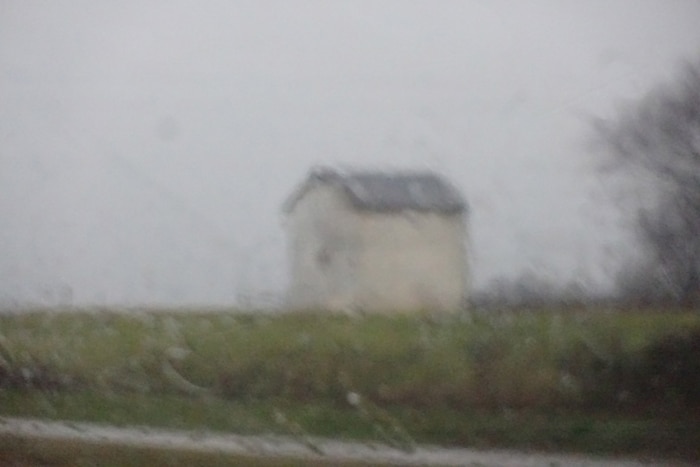
I was on my way to meet Connie B. Steadman of the Badgett Sisters, an a cappella gospel trio of tremendous depth, not too well known outside of North Carolina, where they sang in “folklife festivals, churches, schools, prisons and mental hospitals” according to the notes on their first LP.
I’ve been studying ethnographic records and incorporating them into lecture works for years now, immersing myself in ritual music from far-flung and little-known areas of this world, but something persistently calls me back to my childhood home of North Carolina. The Badgett Sisters’ recordings, in particular, have been a great source of strength, and of replenishment. I had heard that one of the Badgetts was still around and resolved that the next time I returned home I would seek her out, mostly just to say thank you.
Riding through the rolling hills of Orange County, I studied old country shacks, stray architectural ciphers of rural life that punctuate the passing mounds of earth. Dilapidated scraps of wood and bowed sheet metal housing farming equipment, grain and wood – they always seem to be rotting from exposure to the elements, ready to fall apart and yet there they are, steadfast.
“They say flooding is a big part of the cleansing process for North Carolina,” my mother said as she watched the road, the rain on the windshield now coming in waves, moving towards an undifferentiated downpour. I thought of the trail of tears, what it might take to wash something like that away.
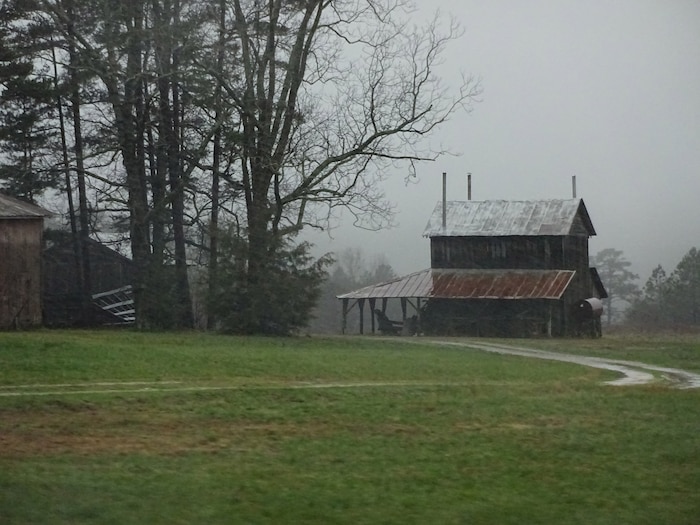
Yanceyville is a small town, population around 2,000. It’s a predominantly African American agricultural community located in Caswell County, bordering Virginia to its north. (I would later find out the Badgetts themselves farmed tobacco there for generations.)
I must’ve stuck out like a sore thumb in the local library, our designated meeting place. Any out-of-towner would, but I walked in with a bouquet of pink roses and started looking around corners. A man seated at a computer stared and made a curious upward nod in my direction, the woman at the front desk asked if she could help me.
“I’m meeting someone here actually...”
Just then she appeared, only a few feet from the librarian.
“I believe you’re looking for me.”
I handed her the flowers and we made our way to an adjacent conference room.
Their three voices so often blend so gracefully into one indistinguishable, powerful whole that it can be hard to separate one from another.
I began by expressing my gratitude and appreciation for the Badgett Sisters, how much their music affected me, how their voices reminded me so much of home, of women in my own family and those who taught me as I grew. As soon as I had her on the phone, I was trying to guess which voice she was. Her older sister Celeste has an unmistakably deep voice, but their three voices so often blend so gracefully into one indistinguishable, powerful whole that it can be hard to separate one from another.
In the discourse of ethnomusicology, polyphony is often thought to map power relations within a given community. How voices relate to one another – who leads and who follows, who is allowed to sing at all and how we then sing together / to one another, these are all reflective of hierarchy or lack thereof within a given community, or – in this case – family. The Badgett Sisters are not only an excellent example of harmony in a technical sense, they provide a startlingly beautiful example of how people within a family might relate to one another – such intimacy, such sensitive understanding of one’s place in relation to others, even the silences are considered.
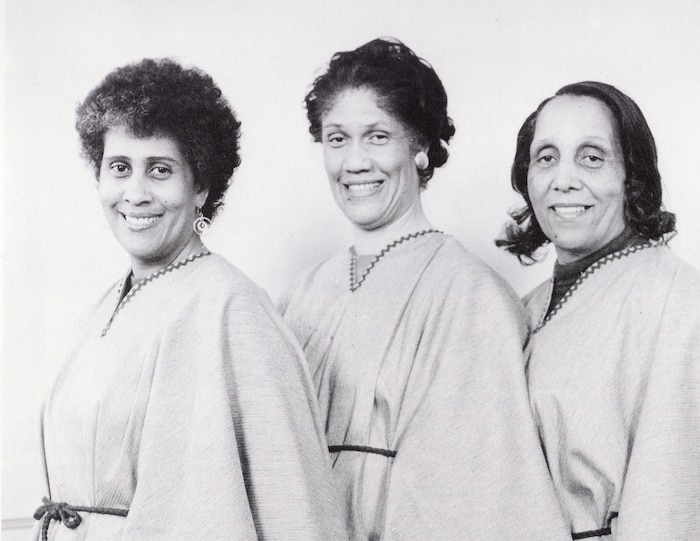
I asked about the distinction between gospel and secular music in their household growing up.
“Well, we weren’t allowed to do secular music. My daddy wouldn’t allow it. He may have known that we danced... and he didn’t say anything, but he didn’t approve.” Then she leaned in as if letting me in on a secret. “Daddy even played the guitar, but he wouldn’t play it outside the house.”
During the struggle for civil rights, old church songs served to lift the spirits of those African Americans who wanted nothing more than to live in peace and in undisturbed dignity. So many of these songs – which told of being received in heaven and laying burdens down – were readily understood as urgent messages of the need for liberation.
African American oral tradition has, out of necessity, grown to accommodate such camouflaged and codified speech, carefully weighed to reach certain ears and to evade others, as is most famously exemplified in the language of the underground railroad where Harriet Tubman was called “Moses” and the Ohio River was known as “the River Jordan.”
I asked Steadman about the song, “Steal Away.” During the Jim Crow period, the phrase referred to sharecroppers who, unfairly burdened with debt by plantation owners, would disappear into the night seeking freedom and in doing so run off on their unjust debt. To what extent, when you were growing up, did you think of these songs as political?
She didn’t seem quite comfortable with my characterization of the songs as political, but on “Steal Away” she offered: “Well, you know, when we sing ‘my Lord calls me by the thunder and the lightning,’ this comes from the time of slavery. That was a signal that at night there would be a storm and that would be the time to make our move. Wade in the water was (sung as) a way to signal that they were to escape by crossing the water that night.”
Storytelling – and explaining the origins songs like these – has always been a part of the Badgetts’ repertoire, a means of ensuring not only that the old songs are kept alive, but also that the context in which they were sung is not lost.
In trying to establish a timeline, I asked, “Were they always a trio?” “We were the Badgett Family – the original Badgett Family consisted of my dad, my oldest sister Ella, next oldest sister Cleo and oldest brother Cortelyou, Jr…. When my brother was 12 he was no longer with the group because of Baptist Church Traditions that didn't allow you to participate in church services if you had not become a member. Celester was placed in the group to fill his space. When Ella became 16 she no longer wanted to be a part of the group and so I replaced her.”
Connie’s father, Cortelyou Odell Badgett was the architect and the visionary of their sound. In 1954 he recorded a number of four part a cappella gospel songs using his own voice multi-tracked and overdubbed to form all four parts of the harmony, calling himself a “one man quartet.” He was locally renowned as a master quartet arranger and choirmaster. He worked with two groups – The Badgett Family and the Silvertone Quartet – both comprised solely of family.
Unfortunately their father passed away in 1978, just before the Badgetts recorded “Travelling Shoes,” their first official on-record appearance, for Eight-Hand Sets and Holy Steps under the name The Badgett Sisters. When it came time to record their first full-length record in 1986 it was dedicated to their father and titled in homage, The Voice that Refused to Die. It even begins with Mr. Badgett’s four-part overdubs singing “I don’t want nobody stumbling over my life...” before his daughters’ voices come in, echoing him in the present.
Thus from the beginning of their recorded life there was always a voice which we the listeners could not detect but which shaped, guided and invisibly harmonized. Five years later, in 1991, Cleo, frequently the lead singer of the Badgett Sisters, passed. In 1995, Connie and Celester released Give Me Wings, which brings both of their voices powerfully to the fore but in doing so highlights the absence of their sister. The economy of harmonizing had to shift towards a dual axis, trading off on lead and support, whereas before they laid a shifting bed of hums and wordless vocals for their sister to sing atop, or all alternated parts, or sang in unison.
Nowadays Celester no longer sings. When she does perform, Connie sings alone.
It must be strange singing by yourself, as this always been a matter of singing harmonies right?
“Yes, it is... But I can still hear them.”
Which is to say that even when she sings alone this could never be a soloistic practice – it is inextricable from polyphony, and from harmony.
Connie B. Steadman is currently back in the studio recording with Glenn Hinson, who has recorded and produced all of The Badgett Sisters’ studio output, and Noah Angell is presently working on a documentary film about The Badgett Sisters. This article first appeared in Arabic at ma3azef.com.
